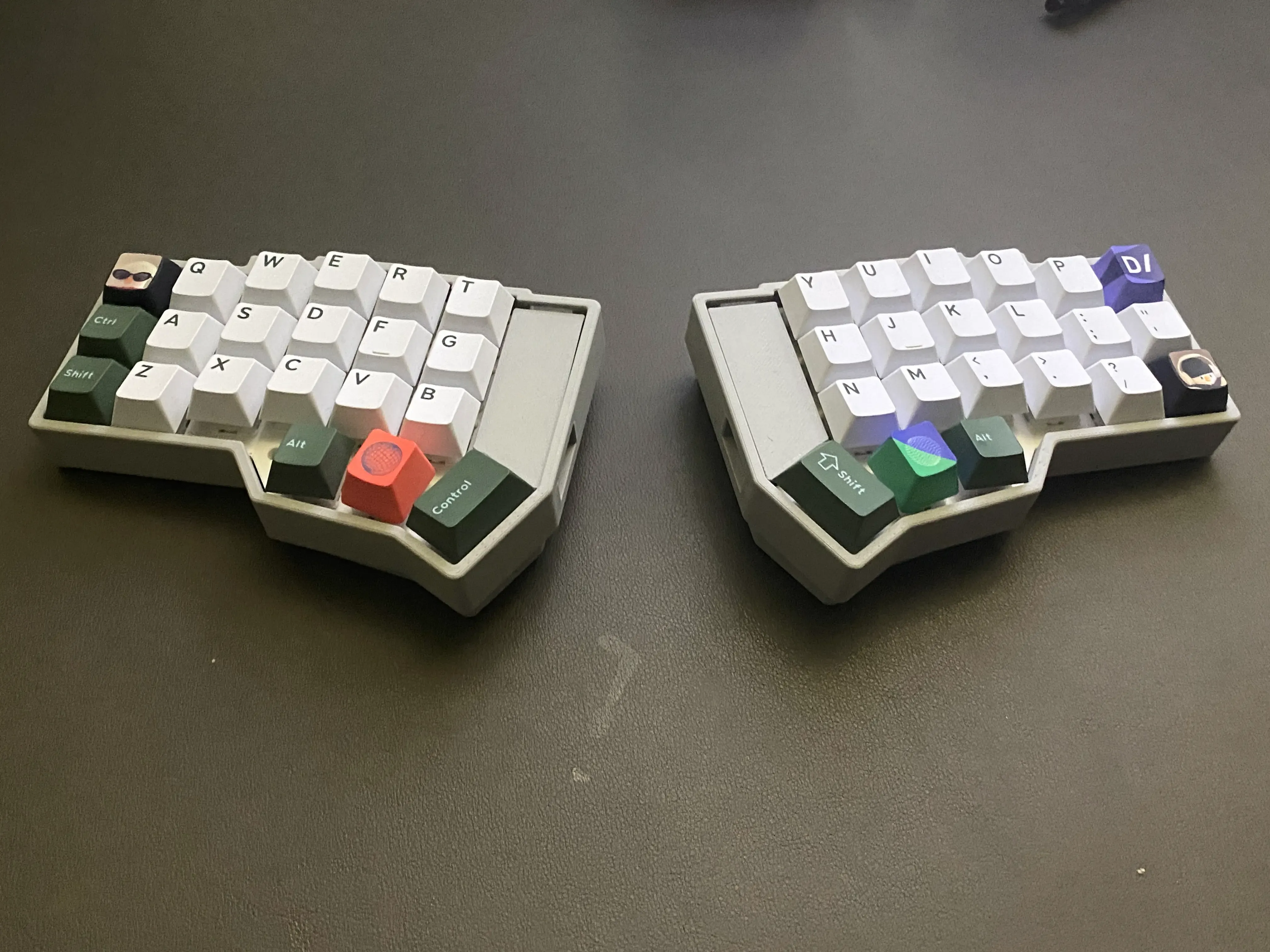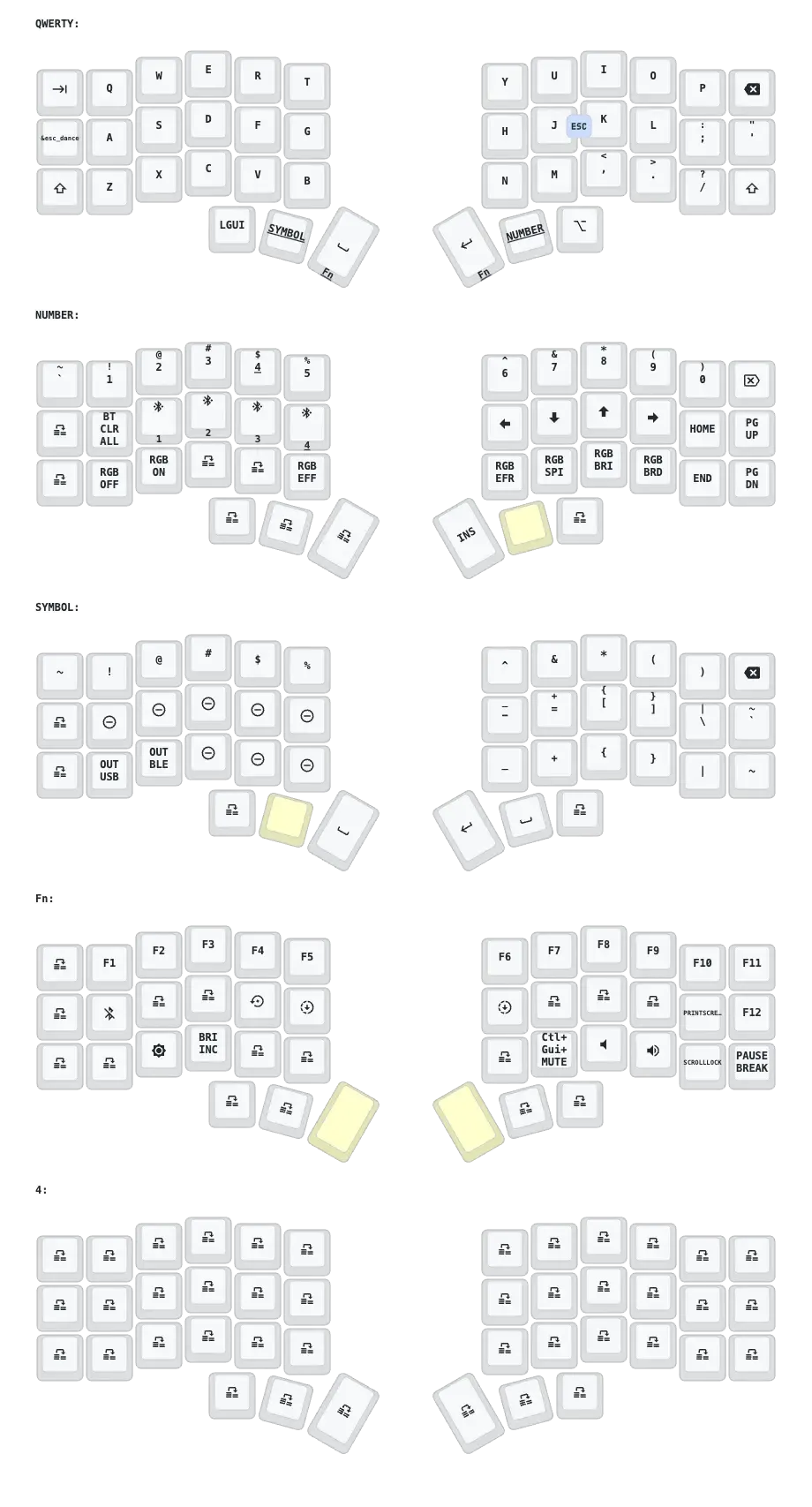I’ve been coding a lot lately, and my shoulders have been stiff from sitting and typing for a long time. I remembered hearing about split keyboards a couple of years ago when I was really into keyboards, and decided to give it a try.
I’d heard that split keyboards are less comfortable to type on than regular keyboards, but I’m more of a convenience person than a comfort person, so I figured it was worth a try.
The domestic market for split keyboards is not very large, so the options are limited, and they are quite expensive to buy in Korea. In the end, I had to look overseas.
As with other keyboards, there were two ways to buy a split keyboard: buy the parts and assemble it yourself, or buy the finished product. I chose the finished product because I wanted to try it out quickly and figure out my preferences. The Chinese market is the most developed in this area, so I bought it through Taobao.
My criteria for choosing a split keyboard were as follows
- portability: it should be compact enough to be carried around
- minimalist layout: The fewer keys, the better
- connectivity: both wired and wireless, but preferably wireless
- decorative elements: no LEDs, etc.
Since I wanted to use it on the go, I was looking for a keyboard that met the above criteria, even if it was difficult to get used to at first. After searching around the internet, I realized that a lot of people were buying Corne v4.1 as an entry-level keyboard, so I chose this model. I think it’s a good choice that fulfills my requirements and is affordable.
I’ve been using it for about two weeks now. The first few days were definitely a learning curve, but I’m pretty happy with it now. My experience so far has been good/bad.
Pros
- Improved shoulder stiffness:** First of all, my main reason for purchasing this product was to improve my shoulder stiffness. I was able to keep my hands in their natural position, which reduced a lot of tension in my shoulders and arms.
- Portability:** It’s small and lightweight, so it’s easy to carry in my bag. I can easily take it to cafes and other places to work.
- Utilizes desk space: It takes up much less space than a traditional keyboard. I especially like the fact that you can spread the sides as far apart as you want.
Cons
- Difficult to type special characters: It’s still awkward to type special characters compared to a regular keyboard. There are a lot of characters that require you to switch between layers, which I’m still not completely used to.
- Unreliable wireless connection: The wireless connection sometimes drops out. You can use it wired, but I’m not willing to give up the convenience of wireless.
- Noise issues: The typing noise is louder than I expected. I’ve ordered a silent switch to replace it, but I’m not sure if it’s because of the small size of the airplane.
Overall
After two weeks of use, I am very pleased overall. The initial goal of improving shoulder stiffness is definitely working, and the portability and space utilization have exceeded my expectations.
There are a few inconveniences, but they’re mostly manageable with adaptation, and I’m satisfied enough that I have no intention of buying another keyboard at this point.
If you’re on the fence about a split keyboard, it’s definitely worth a try, especially if you have shoulder or wrist discomfort.

Keymap
I’m attaching the keymap I’m using now, in case it helps.

You can find a slightly more recent keymap in this repo.